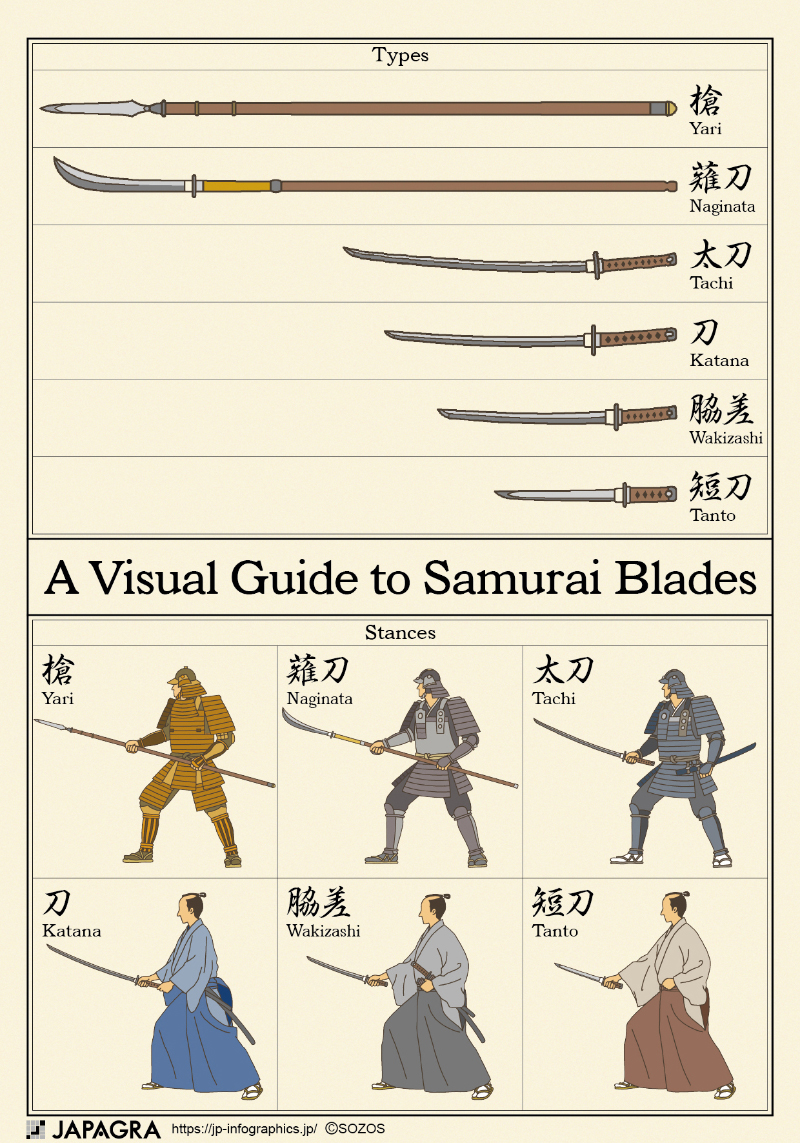A Visual Guide to Samurai Blades
Beyond their role as mere weapons, Japanese swords are celebrated worldwide as artistic masterpieces embodying Japan’s aesthetic and spiritual essence.
As warfare evolved through the ages, so did the forms of these swords, giving birth to numerous legendary blades. They have been handed down through generations as symbols of Bushido—the samurai code—and Japanese culture.
Here, we introduce representative types of Japanese swords, highlighting their forms, techniques, and handling styles.
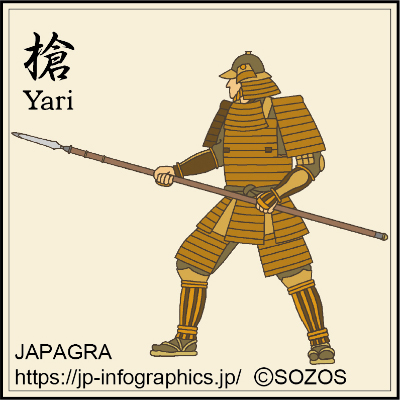
The yari is a practical weapon from the Sengoku period, featuring a sharp blade mounted on a long shaft. The blade typically measured around 30–40 cm, with the full length ranging from approximately 120 to 210 cm. Its specialty was thrusting attacks. Wielded with both hands, the basic stance involved lowering the body and thrusting the spear forward, aiming to strike through the slightest opening while maintaining distance from the enemy. Spears were used not only by samurai but also widely in mass infantry battles by “ashigaru ”(foot soldiers).
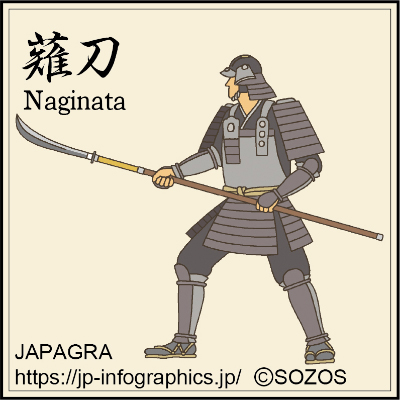
The naginata is a weapon featuring a long, curved blade mounted on the end of a shaft, which first appeared during the Heian period. It was suited for combat on foot and was used not only by samurai but also by warrior monks and women of samurai families. The blade length was approximately 40–60 cm, with an overall length of about 150–200 cm. It was typically wielded with both hands, taking advantage of its long reach to control a wide area. The main techniques involve wide, sweeping slashes and strikes, aiming at the opponent’s legs or torso.
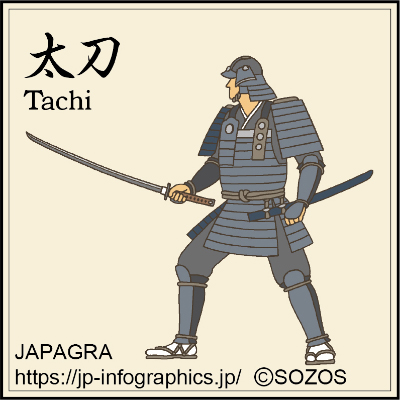
The tachi was developed for mounted combat. With blade lengths between approximately 60–90 cm and a pronounced curve, it was designed for downward slashing while holding the reins in one hand and the sword in the other. It was typically carried suspended from the waist with the edge facing downward—a style known as “haku”. Tachi were primarily used during the Heian to Kamakura periods, when samurai battles on horseback were prevalent.

The katana, or uchigatana, is the most widely recognized form of the Japanese sword. Its blade length is around 70 cm, with a shallower curve compared to the tachi. A key distinction is that the katana is worn thrust through the belt with the edge facing upward. The standard stance involves gripping the hilt with both hands, and it excels in techniques where the sword is drawn and cut in a single motion. Highly maneuverable and versatile in both offense and defense, it remained popular until the late Edo period.

The wakizashi is a companion sword to the katana, featuring a shorter blade of about 30–60 cm. It was mainly used with one hand and was practical for close-quarters or indoor combat where longer swords were less effective. During the Edo period, it became customary for samurai to carry both a katana and a wakizashi together—a style known as“daishō”. Wakizashi were also permitted for townspeople as personal defense weapons.
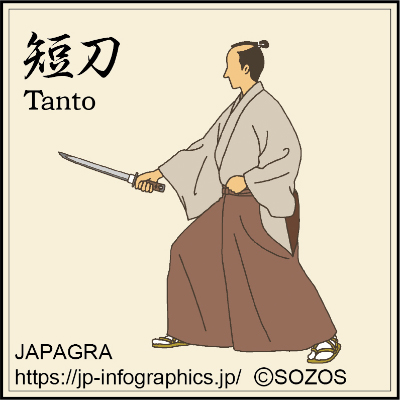
The tanto is a short blade under 30 cm in length, prized for its portability. It was mainly used for self-defense and was carried by women and children of samurai families as a protective charm. It also served in ritual suicide. Wielded primarily with one hand, the tanto was highly effective in close-range combat, excelling at swift thrusting and stabbing techniques. It was often concealed and used for ambushes or surprise attacks.
Sources
Introduction to Japanese Swords: Understand the Charm with This One Book
Sword Fan Editorial Department (author), Tsuchiko Tamio (supervisor)
Articles










